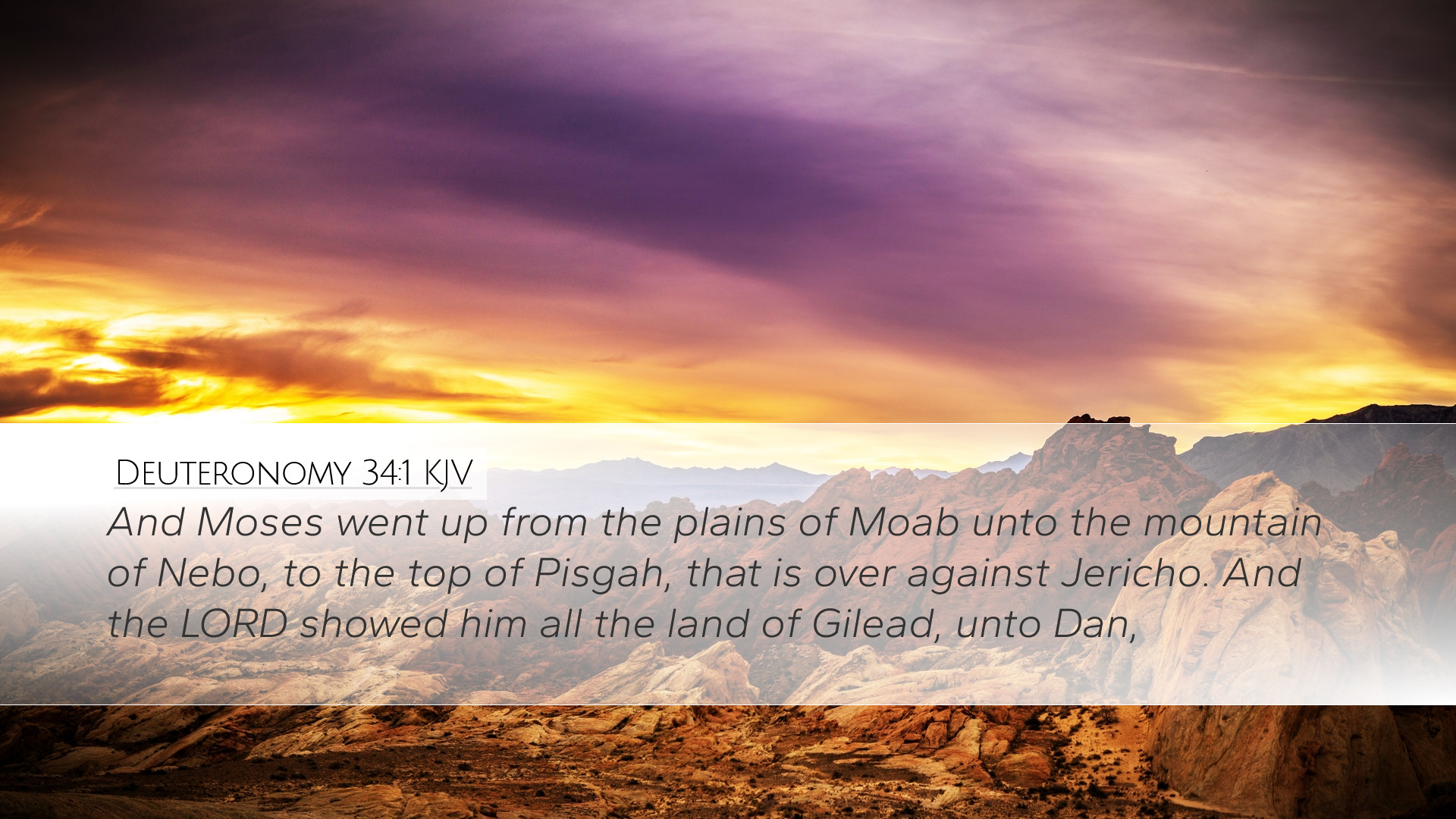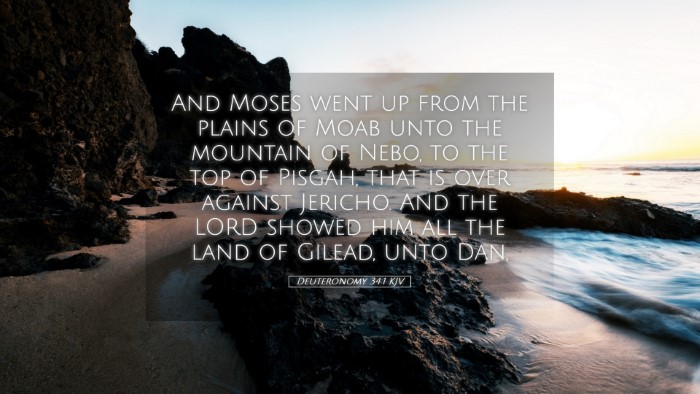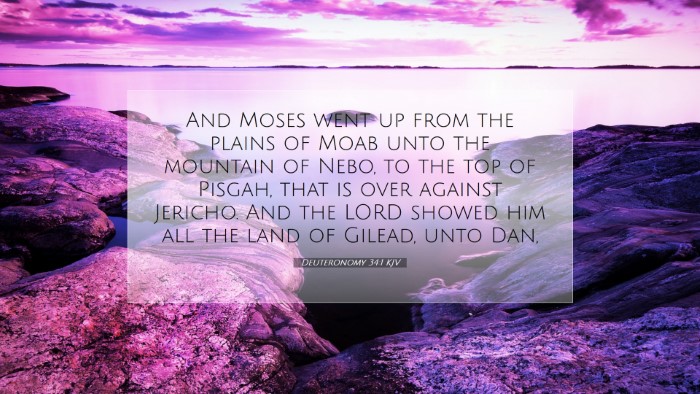Commentary on Deuteronomy 34:1
Verse Reference: Deuteronomy 34:1 - "And Moses went up from the plains of Moab unto the mountain of Nebo, to the top of Pisgah, that is over against Jericho. And the Lord showed him all the land of Gilead, unto Dan."
Introduction
This verse marks a significant moment in the narrative of Israel's journey. Moses, the great leader and lawgiver, is about to conclude his earthly journey and look upon the Promised Land from a distance. It is crucial for pastors, students, theologians, and scholars to reflect on the meaning of Moses' ascension, the vision of the land, and the implications it has for faith and leadership.
Moses' Ascension to Mount Nebo
The first part of the verse highlights Moses' physical ascent:
- Symbolism of Ascent: The act of ascending a mountain often symbolizes a search for spiritual revelation. In this instance, it is both a literal and figurative journey as Moses approaches the end of his terrestrial mission (Matthew Henry).
- Geographical Significance: Mount Nebo, part of the Abarim range, serves as a vantage point from which Moses gazes upon the land he led Israel toward for forty years. The location represents both the fulfillment and the limitation of his leadership (Albert Barnes).
- Transition of Leadership: Moses' ascent serves as a preparation for the transition of leadership to Joshua, emphasizing that while he has led them thus far, the journey will now continue under a new guide (Adam Clarke).
The Place of Vision
As Moses reaches Mount Nebo, he is shown a panoramic view of the Promised Land:
- The Land of Promise: The scope of land that is revealed to Moses is a symbolic representation of God's promise to His people. It exemplifies God's faithfulness and the fruition of the covenant made with Abraham (Matthew Henry).
- Spiritual Insights: From this mountaintop experience, one can glean spiritual insights about visions and the future. Just as Moses sees the land from a distance, believers are often called to have faith in the promises of God that may not be fully realized in their own lifetimes (Albert Barnes).
- Divine Revelation: The act of God showing Moses the land emphasizes the notion that divine revelation often comes at pivotal moments. It highlights the interplay of vision, faith, and obedience that defines the journey of God's people (Adam Clarke).
The Scope of the Vision
Moses is shown "all the land of Gilead, unto Dan", which provides specific insight into the territory that lies ahead:
- Geographic Understanding: Gilead was known for its balm, a sign of healing and restoration, symbolizing the joys and sorrows of Israel's future (Matthew Henry).
- Spiritual Warfare: The mention of Dan reflects the geographical extent of the Israelites' inheritance. It serves as a reminder that possessing the land involves spiritual warfare and reliance on God (Albert Barnes).
- Comprehensive Vision: This vision serves to remind future generations of the vastness of God's promise, encouraging them to pursue it wholeheartedly (Adam Clarke).
Lessons for Leadership and Faith
Moses' experience on Mount Nebo provides profound lessons for leaders and believers:
- Endurance in Faithfulness: Moses remained faithful to God's calling despite knowing he would not enter the land. This demonstrates the true nature of leadership—serving faithfully even when personal sacrifices are required (Matthew Henry).
- Vision Beyond Self: Leaders should seek to cast a vision that extends beyond their lifetime, motivating those who follow to believe in and work towards the fulfillment of God's promises (Albert Barnes).
- Trust in God's Plan: Even in the face of disappointment, Moses trusted in God's overarching plan. This model of unwavering faith in God's bigger picture is crucial for all believers (Adam Clarke).
Conclusion
Deuteronomy 34:1 encapsulates a pivotal moment that melds the conclusion of a significant era with the hope of new beginnings. The ascension of Moses to Mount Nebo symbolizes spiritual insight, leadership transition, and the bittersweet nature of divine promise. It serves as an everlasting reminder to pastors, students, theologians, and scholars of the importance of faithfulness, vision, and trust in God's divine purposes.


